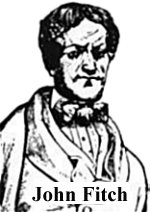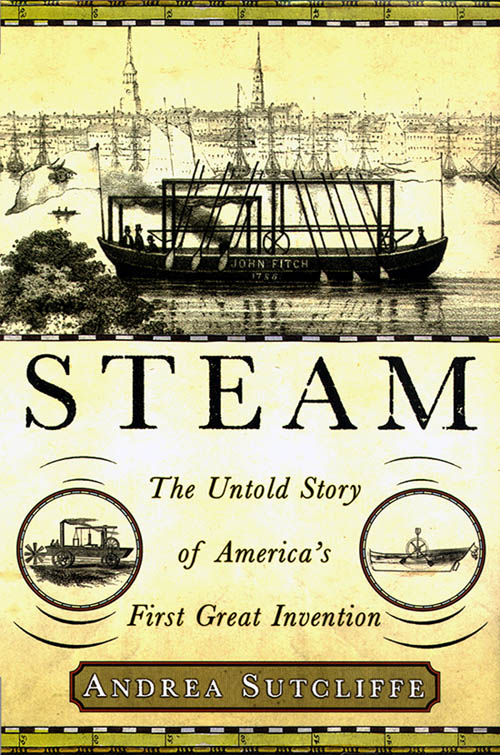Fitch's Circle
Today, a host of creative people hovers over a steamboat. The University of Houston's College of Engineering presents this series about the machines that make our civilization run, and the people whose ingenuity created them.
 I've just re-read Andrea Sutcliffe's fine book, Steam-- all about the first American steamboats, built right after the American Revolution. She tells the story of John Fitch, first to build a steamboat that actually served paying customers. But, beyond that, she introduces us to the great cast of characters who converged on the idea of the steam-powered boats, in the 1780s.
I've just re-read Andrea Sutcliffe's fine book, Steam-- all about the first American steamboats, built right after the American Revolution. She tells the story of John Fitch, first to build a steamboat that actually served paying customers. But, beyond that, she introduces us to the great cast of characters who converged on the idea of the steam-powered boats, in the 1780s.
The action centers on Philadelphia, a city toward which many of the players had gravitated. John Fitch is there from Connecticut, Ben Franklin from Massachusetts, and Thomas Paine from England. 1786 finds Fitch trying to build his steamboat. Then he hears that someone else has also been talking about such a machine.
Fitch is appalled and spends the next 24 hours following leads, trying to find out who it might be. His detective work takes him at last to a boarding house where he finds a British mechanic named John Hall, and his friend, also British, Thomas Paine.
 Paine is, by now, well-known for his pamphlet Common Sense, which had so fueled the American Revolution. But he and Hall are working together on revolution of quite another sort: Paine believes that his new iron bridge design will stand up better than masonry does, against ice in the cold American Rivers.
Paine is, by now, well-known for his pamphlet Common Sense, which had so fueled the American Revolution. But he and Hall are working together on revolution of quite another sort: Paine believes that his new iron bridge design will stand up better than masonry does, against ice in the cold American Rivers.
Paine and Hall had also been talking about the potential of steam for driving boats. That's how word got back to Fitch. Luckily, Fitch finds not a competitor but an ally. A year later, Paine went back to England to promote his bridge and do more revolutionary writing. Hall stayed in America where he not only gave Fitch substantive advice, but later actually helped him to build his boat.
The plot thickens: Ben Franklin is a close friend to Thomas Paine. He's even set up a model of a Paine bridge in his yard. And, though Paine's friend, Hall, worked with Fitch, Franklin has come up the same propulsion system as Fitch's competitor James Rumsey.
Franklin had suggested propelling a boat by taking water in the front, then pumping it out the back in a jet. And Rumsey was trying to power just such a jet-driven boat with a steam pump, while Fitch used various arrangements of paddles. Both Rumsey and Fitch had pitched their steamboats to George Washington. Washington, alas, rode the wrong horse. He brushed Fitch off, and backed Rumsey -- whose boat turned out to be intolerably slow.
Well, there are many more names; you'll meet them all in Sutcliffe's book. Much later in the game, Robert Fulton set up successful steamboat businesses and was acclaimed as the boat's inventor. But Sutcliffe tells of that brief period before our new country even had a patent office. During this epoch, the people who built America did so technologically as well as politically.
Revolution, technology, and statesmanship were of a piece in this time that we need to remember today -- especially as we see our schooling in science and technology foundering so badly.
I'm John Lienhard, at the University of Houston, where we're interested in the way inventive minds work.
Sutcliffe, Steam: The Untold Story of America's First Great Invention. (New York: Palgrave MacMillan, 2004).
For more on Fitch and on early steamboats, see Episodes: 1397, 1866, 1962, 1991, and 1084. The two images above widely-circulated and in the public domain.
